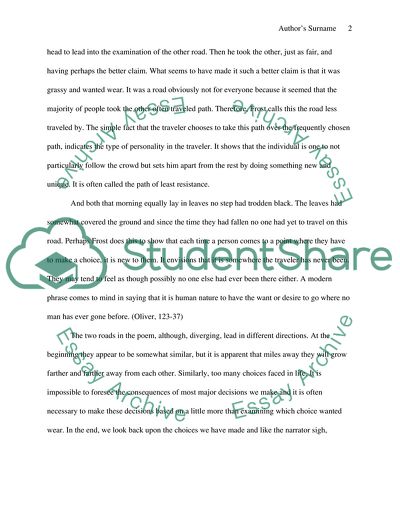The Road Not Taken by Robert Frost Book Report/Review Example | Topics and Well Written Essays - 1750 words. https://studentshare.org/literature/1712920-lliterary-analysisinterpretation-paper-on-the-road-not-taken-by-robert-frost
The Road Not Taken by Robert Frost Book Report/Review Example | Topics and Well Written Essays - 1750 Words. https://studentshare.org/literature/1712920-lliterary-analysisinterpretation-paper-on-the-road-not-taken-by-robert-frost.


